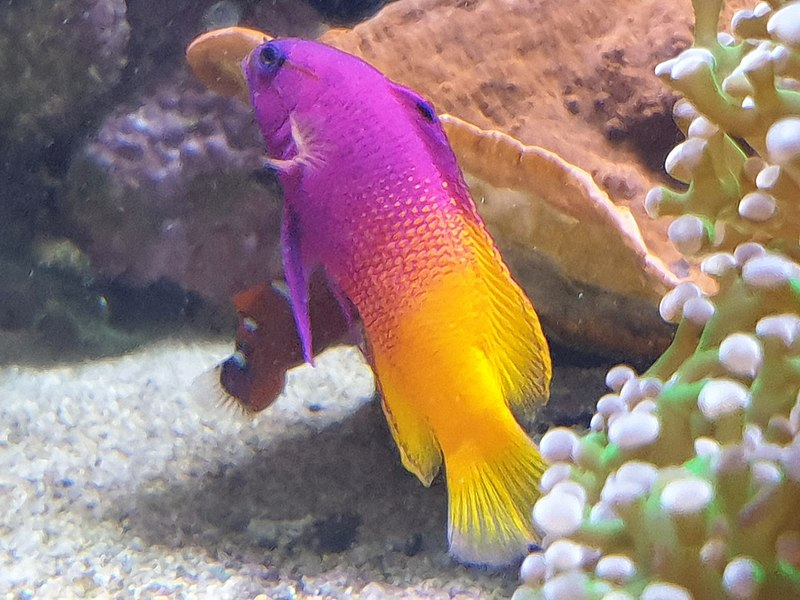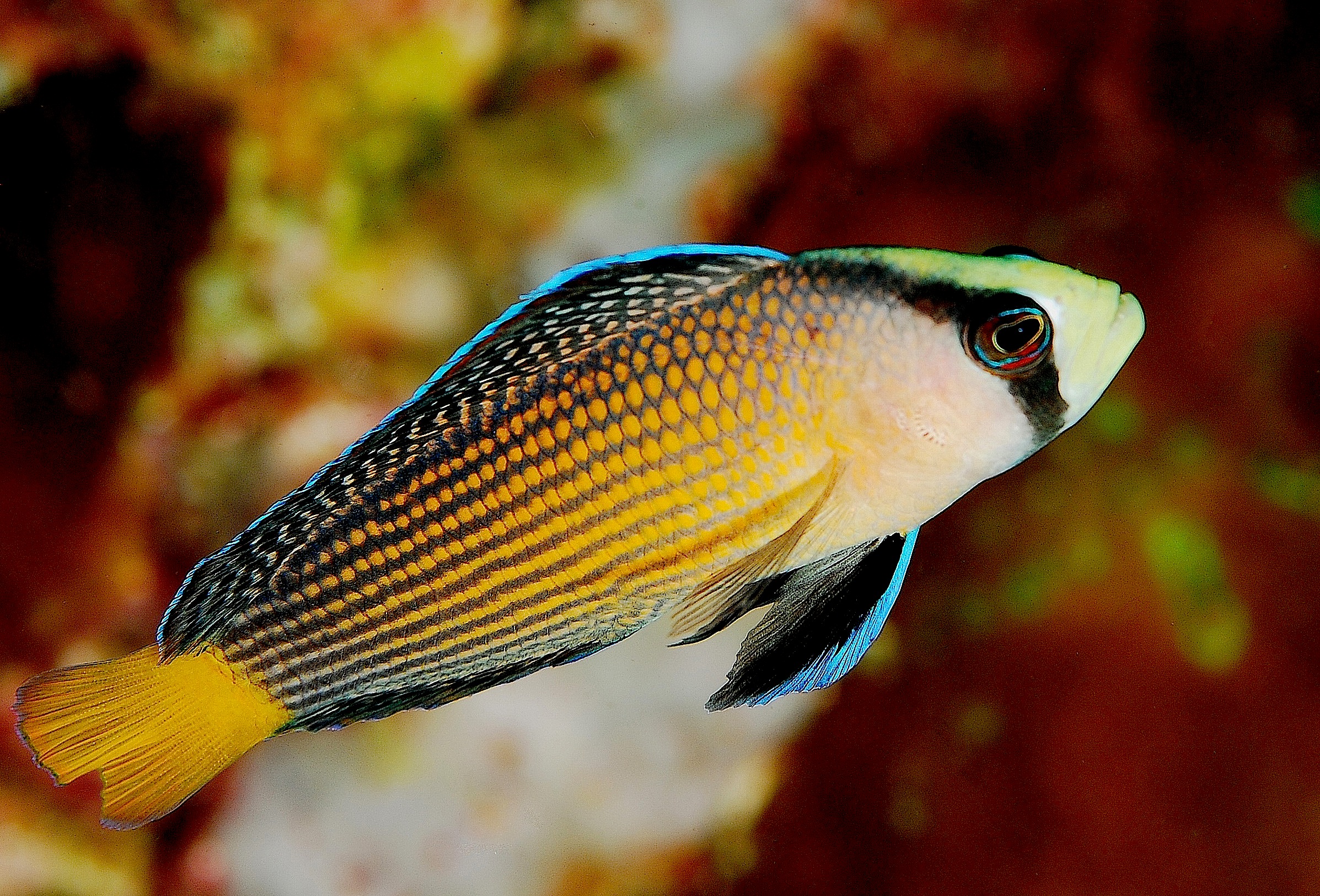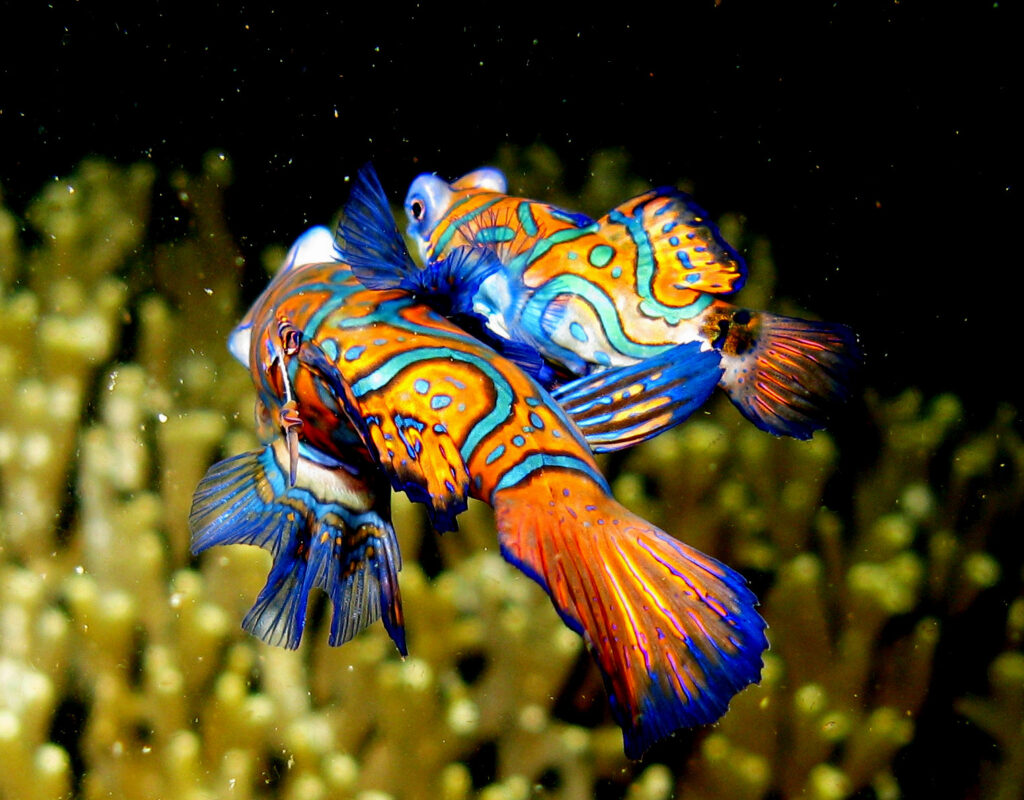Why wouldn’t you want to create your own saltwater reef or nano reef tank at home for your fish?
While the size or type of your tank may restrict you as to which fish and coral you can introduce into your environment, there are plenty of hardy species of fish out there who do great in all kinds of reef aquariums. In this guide, we’re taking a look at the best fish for reef tank owners.
But which species of fish should you ideally be looking for to introduce to your tanks?
You might know the name of one or two, but do you know the difference between your Angelfish and your Watchman Goby? Are Clownfish going to be a peaceful choice for your reef tank or reef aquarium?
In this guide, we’ll take a look at the best species safe for you to introduce into your saltwater fish tank. From blue and orange to silver, these are small to large fish which you can safely introduce and propagate in your reef water without you having to worry about the coral getting damaged. These are very safe fish indeed!
What are the Best Reef Safe Fish?
Royal Gramma
The Royal Gramma is a small, reef safe fish you’d normally find in Caribbean waters. It tends to be a great choice if you’re just getting started with any kind of reef tank!

They don’t tend to be very aggressive, and come in bright, vibrant colours of yellow and purple. These peaceful, hardy fish grow to be about 3 inches in length and make great tank mates for several different species. Just make sure you have a minimum tank size of around 30 gallons for a few of these beautiful species.
Dottyback
Dottyback fish come in all kinds of colors, and can sometimes be mistaken for Gramma fish, like those above. They tend to be brilliant at keeping your tank clear of nastiness and can make good tank mates, though they may be known to back up their territory once in a while.

It’s worth remembering that there are different types of Dottyback, too, such as the Strawberry Dottyback and the Neon Dottyback. The latter of these saltwater fish tend to do well in a tank that’s about 30 gallons in volume, as they can grow to be up to around 4 inches in length.
Watchman Goby
The Yellow Watchman Goby goes by quite a few names, though it’s most famous for being a super attractive saltwater tank fish, ideal for all kinds of reef safe aquariums. These striking looking critters tend to be fairly cautious on the whole, and in the wild, they can actually form bonds with other fish!

The Yellow Watchman Goby tends to do best in water temperatures of at least 72F, meaning that they should do well in a saltwater tank at your average wild temperature.
Firefish
The Firefish is another type of Goby, and this is a fairly small critter in the species, probably one of the tiniest saltwater aquarium fish you will come across. It is a reef safe fish that’s really striking in large numbers, and yes, it’s a reef safe fish that shouldn’t be too aggressive.

Tangs
Tangs come in all kinds of colors – you’ll likely recognize the blue tang variety of the species from a certain Disney movie – but the best thing about these reef safe fish is that they will help to get rid of nasty algae for you out of your tank, while your coral goes unscathed.

We’d recommend taking a look at the yellow variant of the tang, simply because they are so striking and great fun to watch swimming about. They are amazingly active! However, despite being herbivores, they can sometimes be a little aggressive. They can grow up to 8 inches.
Damselfish
Depending on your reef tank size, we’d seriously recommend you introduce this hardy fish into your home waters. There are actually lots of different types of Damselfish out there, meaning that they will all likely vary in terms of color and size when reaching adulthood, meaning it’s well worth checking out the vital statistics of your chosen breed of the species. Generally, you can expect these swimmers to reach around 2 inches in length, so not always the biggest.

However, keep in mind that these fish swim well together in larger groups, and Damselfish of varying types can make great tankmates. However, they can get pretty aggressive when it comes to other types of fish sharing their tank.
Clownfish
Clownfish, again, are likely to be really familiar if you’re into your Disney movies! These bright, breezy saltwater critters are reef safe fish, and again, they actually come in a variety of different breeds. Some of the most popular are the fire and cinnamon Clownfish, as well as the Tomato variety.
However, what you really need to look out for when considering Clownfish for your saltwater tank is the fact that they can be a little aggressive depending on who they are sharing their space with. This, according to experts, is especially the case with the maroon Clownfish. Discretion and caution are always advised!
Coral Beauties
Coral Beauties are types of Angelfish which tend to propagate well in big saltwater tanks, making them really reef safe. They are also known as Centropyge bispinosus. These fish are really striking to look at with tinges of blue and orange – their looks can even put some of the brighter freshwater fish in the shade!

Coral Beauties, as their name suggests, thrive in the coral. In fact, in the wild, they are commonly found out towards the Great Barrier Reef! Therefore, you can expect to keep their tank temperatures up to around 78F, with a pH of about 8.1 to 8.4. These fish can grow up to around 4 inches in length, too.
Mollies
Mollies are brilliant exotic fish which are also some of the most striking. These saltwater friendly critters are completely reef safe and will often grow up to 4 inches in length, though do again keep in mind that there are also plenty of different varieties in this species! There are common mollies, white mollies, black mollies and even dalmatian mollies!

These fish belong to the Poeciliidae family and will only need a minimum tank size of around 10 gallons. They are really easy to look after, are rarely aggressive, and will do well in warmer tanks.
How Many Fish Can I Have in My Reef Tank?
That varies on how big your tank is, but generally, you should consider two gallons of water for every inch of adult fish. This means that a huge 50 gallon tank should really contain 25 inches of fish, or around 12 two inch fish.
Otherwise, the size and ‘neighbourhood’ of your tank will likely vary. Consider the species you are introducing carefully and try to match tank mates up who will peacefully co-exist, as well as those which are unlikely to crowd one another.
Whether you are bringing in a Six Line Wrasse, Green Chromis or a Coral Beauty Angelfish, it’s always a good idea to try and do some mathematics beforehand. If you’re setting up a reef aquarium, then you are going to need to go bigger wherever possible – as you’ll need space for your coral, too!
Fish love plenty of space on the whole. The more timid species on our list, too, will need little nooks and corners where they can go and hide if they need to. Wide open waters are all well and good, too – especially when your fish are keen to go exploring!
Should You Add Coral or Fish First?
That depends on your tank and what you have in it, but it’s often a good idea to add coral in once your water conditions are ideal. You should do this before putting any fish in place. You’ll normally need to wait for your tank water to complete what is known as the nitrogen cycle. If you put any coral in before the cycle completes, they are not going to live for very long.
The nitrogen cycle can take weeks to complete, as it all depends on how long it will take for water toxins to dissipate. The process revolves around bacteria sweeping up the toxins so that your tank is fresh and ideal in condition for living things to propagate.
Set yourself timescales accordingly – you’re going to need to make sure you set up to two months aside for the cycle to complete in some cases! However, the difference can mean that you end up doing serious, sometimes fatal harm to both your coral and your fish.
So, yes – it’s fine to add coral first – but always make sure that you push your saltwater tank through that nitrogen cycle before you go any further. You might be able to buy tank safe products and additions which can actually speed things up, but always consult an expert before you start placing anything in your reef tank.
Keeping a saltwater reef tank is a lot of fun, and they are really rewarding to watch. However, do be prepared to put in some work and research along the way!
SOURCES



